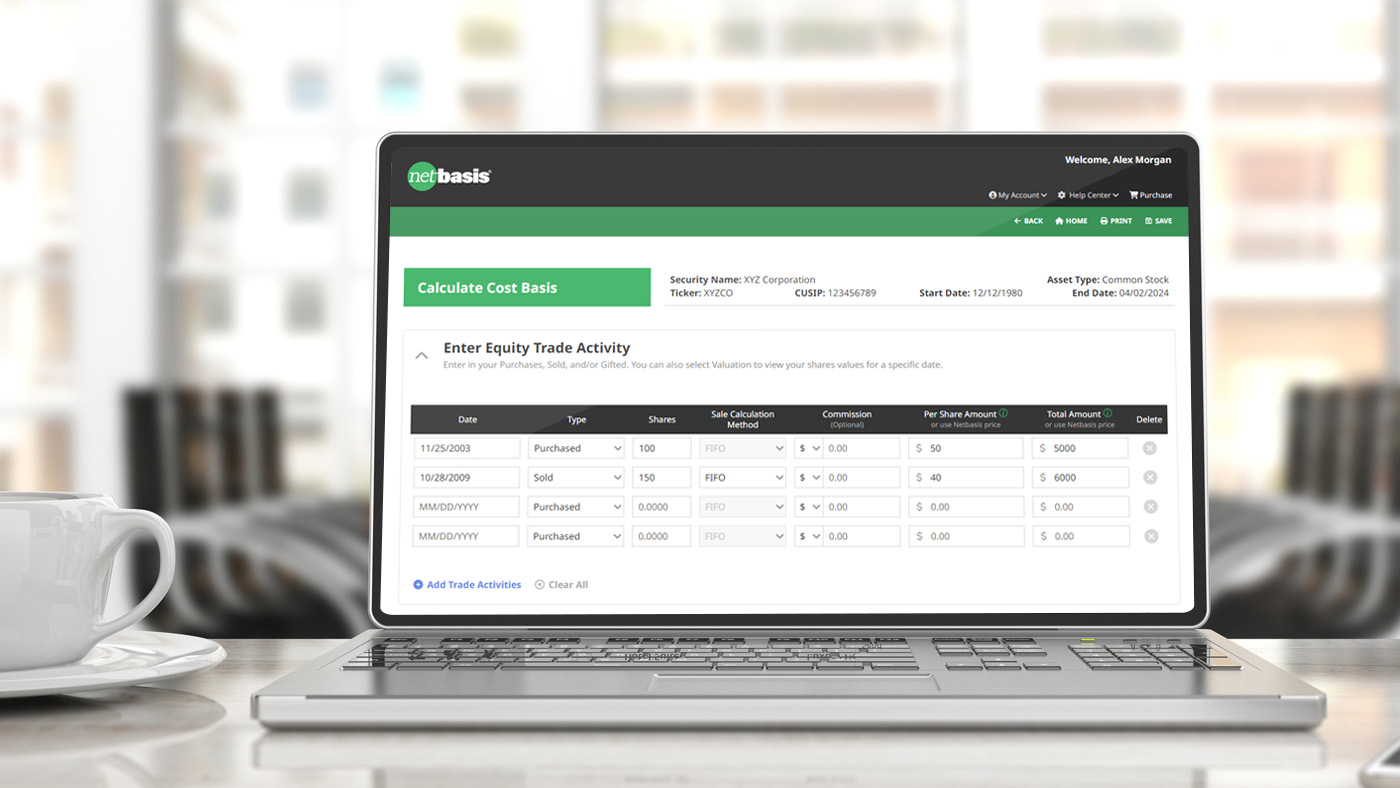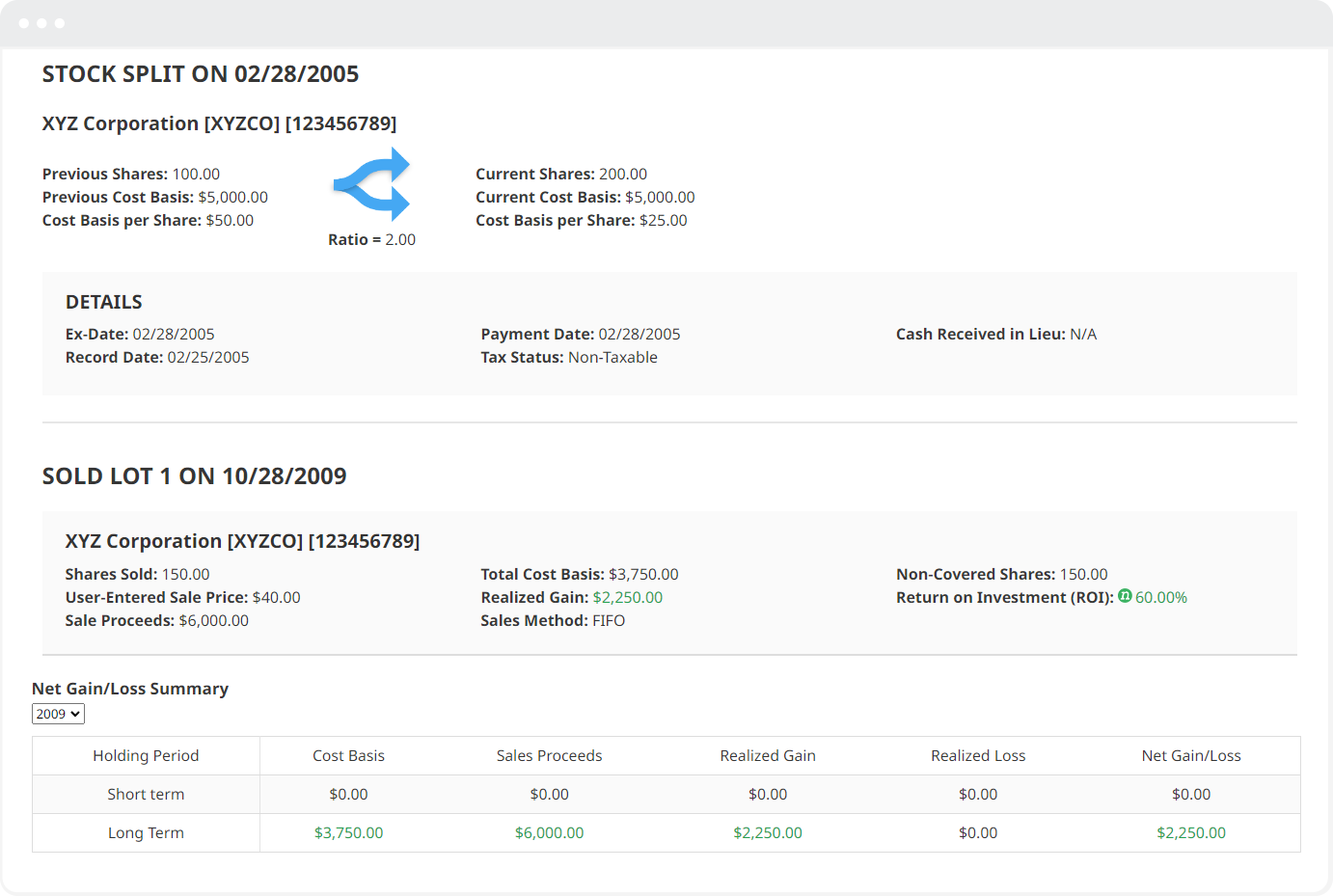
Understanding Your Realized Capital Gains
April 10, 2024 10:17 AM MST
Whenever you realize a profit from selling an investment at a higher price than its purchase cost, it’s necessary to assess and report potential capital gains taxes on your tax return. This applies to any asset, including stocks, mutual funds, and cryptocurrencies sold for a gain will obligate you to calculate your potential tax liability to the IRS.
The capital gain or loss is calculated mainly by subtracting the purchase price (or cost basis) from the selling price. However, this calculation also involves considering other factors, such as adjustments to the cost basis.
Netbasis, an online cost basis calculator can ensure accurate capital gains tax calculations for your investments.
How to accurately calculate capital gains using an adjusted cost basis:
- 1. Determine the Adjusted Cost Basis: Start with the original purchase price (cost basis) which is then adjusted for any corporate events (splits, mergers, spin-offs, dividends reinvested, etc.) that occurred since the security was acquired.
- 2. Calculate the Net Proceeds: Determine the total amount received from the sale of the security, including any expenses incurred during the sale.
- 3. Calculate the Capital Gain or Loss: Subtract the adjusted cost basis from the net proceeds. If the result is positive, it’s a capital gain (if negative, it’s a capital Loss).
Here’s a basic capital gain example:

Let’s say you purchased 100 shares of a stock for $50 per share, totaling $5,000.
Later, the stock underwent a 2-for-1 stock split, doubling your number of shares to 200 but halving the price per share to $25.
Your total cost basis remains at $5,000; however, because you received an additional 100 shares in the 2 for 1 split, your cost basis per share is adjusted in half to $25. Now, let’s say you decided to sell 150 shares of the stock at $40 per share. Your total proceeds received would be $6,000.
Next, you must determine if you have a capital gain or loss by doing the following calculation:
The adjusted cost basis per share is $25. You sold 150 shares with a total cost basis of $3,750 (150 shares X $25). Your total proceeds received from selling 150 shares is $6,000 (150 shares X $40). Your capital gains earn is $2,250 (Proceeds of $6,000 – Cost basis of $3,750). So, in this example, you have a capital gain of $2,250.
Netbasis, can accurately track and document any adjustments to the cost basis to ensure accurate reporting of capital gains tax for reporting purposes.
Finally, how you can determine if the capital gain of $2,250 is long term or short term is as follows:
1. Short-Term Capital Gains:
- - Short-term capital gains apply to securities that are held for one year or less before they are sold.
- - These gains are taxed at ordinary income tax rates, which are the same rates applied to wages, salaries, and other types of income.
- - Short-term capital gains are typically taxed at higher rates compared to long-term capital gains.
2. Long-Term Capital Gains:
- - Long-term capital gains apply to securities that are held for more than one year before they are sold.
- - These gains are subject to preferential tax rates, which are generally lower than ordinary income tax rates.
- - Tax rates for long-term capital gains can vary depending on the taxpayer’s income and filing status.
The accurate calculation of capital gains tax responsibility ensures compliance with tax laws and regulations, helping taxpayers avoid penalties and fines while maximizing tax efficiency. Netbasis, can accurately calculate the adjusted cost basis as well as the capital gains tax for tax reporting.




